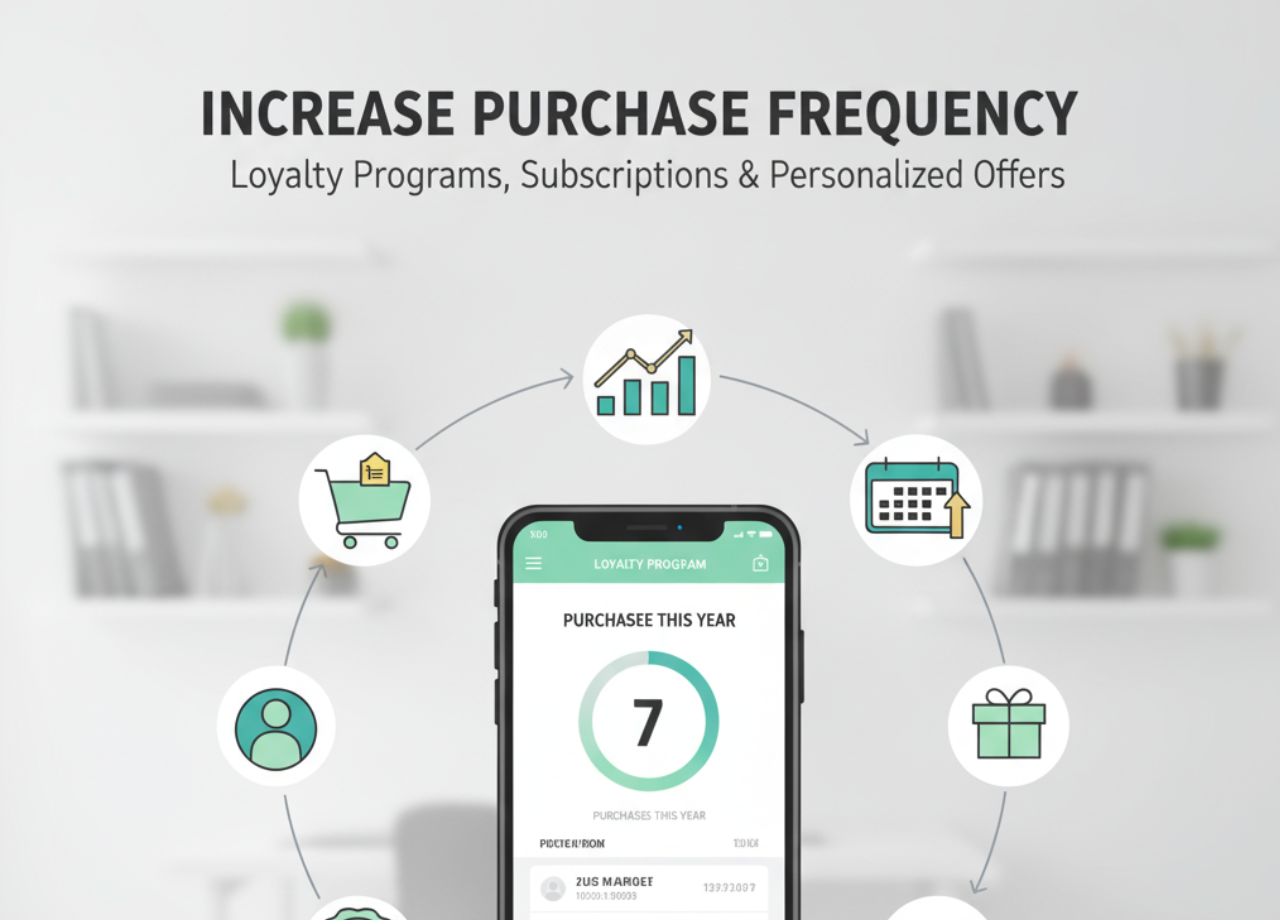
Marketers have been taught for decades that increasing purchase frequency is the holy grail of customer loyalty. If someone buys once a month, get them to buy twice. If they come twice, aim for four. On the surface, the logic seems airtight: more transactions equal more revenue. But in practice, this narrow way of measuring loyalty often backfires. Brands end up chasing short-term volume while eroding the very relationships that could drive long-term profitability.
A loyalty strategy built only on frequency is like adding more passengers to a boat without checking if it has the stability to carry them. Eventually, it tips. The more sophisticated question today is not “How can we make customers buy more often?” but “What kind of engagement makes sense for our brand, and what signals genuine loyalty?”
Why Frequency Became the Default Metric
Frequency became a marketing obsession in the 1990s and early 2000s when retailers first gained access to digital transaction data. Tracking repeat visits was simple, measurable, and easily tied to revenue goals. Airlines, coffee shops, and fast-food chains built points programs that nudged customers toward incremental visits.
The problem is that this thinking spilled into categories where it doesn’t belong. Nobody expects to buy mattresses every three months or luxury handbags every season. Yet some loyalty programs still attempt to engineer artificial reasons for repeat purchases in categories that naturally have low frequency. This disconnect often irritates customers more than it inspires loyalty.
The Hidden Cost of Over-Encouraging Purchases
The push for “more often” can drive unintended consequences:
Discount Dependency – Constant promotions to drive repeat visits train customers to wait for deals instead of valuing the brand.
Brand Fatigue – If communication becomes pushy, customers tune out or unsubscribe. The sense of exclusivity diminishes.
Misalignment with Product Lifecycle – Encouraging too many purchases of items that don’t logically require frequent replacement undermines trust.
Take the fashion industry: a customer who loves a brand’s winter coat doesn’t want to be pressured into buying another a month later. What they might want is styling advice, access to a limited collection, or a first look at next season’s launch. That kind of engagement strengthens loyalty without forcing unnecessary purchases.
When Frequency Actually Works
None of this means frequency should be ignored entirely. In categories with naturally high consumption cycles—coffee, groceries, ride-hailing—encouraging more regular use can be powerful. But even in these cases, the goal should not be blind frequency. It should be relevant frequency.
Consider the success of Starbucks’ rewards program. Its daily and weekly visit cadence makes sense because coffee consumption fits into routine behavior. The program succeeds not just by driving repeat transactions but by embedding the brand into daily rituals. The emotional connection—personalized drinks, the barista calling your name—is as important as the frequency metric itself.
Shifting the Focus: Depth Over Frequency
Brands that mature past the frequency myth often discover that true loyalty comes from depth of engagement. Depth can take many forms:
Emotional Affinity: Customers who identify with a brand’s values and identity are less price-sensitive and more likely to advocate.
Cross-category Adoption: Retailers that expand a customer’s participation across categories (e.g., a grocery store shopper who also uses pharmacy and delivery services).
Community Involvement: Customers who feel part of a brand community—through events, forums, or advocacy—stay longer, even if purchase cadence doesn’t rise sharply.
This shift is crucial because deep loyalty creates resilience. A customer who feels connected is more forgiving of supply issues or price increases, while a customer trained only on discounts disappears the moment a competitor offers a slightly better deal.
How Marketers Can Rethink Loyalty Metrics
If purchase frequency isn’t the ultimate measure, what should marketers prioritize? Here are some metrics that better reflect durable loyalty:
Customer Lifetime Value (CLV) – Rather than counting visits, CLV accounts for the total revenue contribution over the relationship. It prevents overemphasizing low-margin frequent shoppers.

Share of Wallet – Measuring how much a customer spends with you versus competitors. This can reveal hidden loyalty, even in low-frequency categories.
Engagement Signals – App usage, participation in events, content sharing, or community contributions often predict future loyalty better than raw transaction counts.
Referral Behavior – Brand Advocacy is a strong signal of commitment. Customers who recommend you to friends are valuable beyond their own purchase cadence.
This kind of measurement moves brands away from chasing vanity metrics and toward building meaningful, sustainable loyalty.
Rediem’s Approach to Loyalty Beyond Frequency
This is where platforms like Rediem provide a fresh approach. Instead of nudging customers into unsustainable buying patterns, Rediem helps brands design programs that balance transactional rewards with emotional and community-driven engagement. By enabling flexible reward structures—points, experiences, referrals, exclusive access—brands can recognize loyalty in more ways than just purchase counts. This allows them to meet customers where they are, not force them into artificial buying cycles.
Learning from Brands That Avoid the Trap
Some categories demonstrate how powerful it is to step away from pure frequency:
- Patagonia rarely discounts and doesn’t pressure customers to buy more often. Instead, it builds loyalty by encouraging product repair and reuse. The depth of alignment with customer values is far stronger than any frequency tactic could deliver.
- Apple thrives on long replacement cycles. Customers may only buy a new iPhone every three years, but brand loyalty is reinforced through services, ecosystem integration, and brand status.
- Sephora’s Beauty Insider program goes beyond purchase incentives by creating community tiers, events, and content. Customers may not buy makeup weekly, but the relationship deepens through identity and belonging.
These brands illustrate how loyalty can flourish without over-fixation on purchase cadence.
Practical Steps for Marketers
To avoid falling into the purchase frequency myth, marketers should recalibrate their strategies with practical moves:
Audit your Category’s Natural Purchase Cycles – Don’t push customers into unnatural buying behavior.
Diversify Engagement Rewards – Recognize advocacy, referrals, and participation, not just transactions.
Balance Short-term Promotions with Long-Term Affinity – Promotions drive spikes, but storytelling and brand community sustain loyalty.
Listen to Customer Signals – Use surveys, feedback, and behavioral data to understand what type of engagement customers actually want.
This recalibration often reveals hidden opportunities. A customer who only buys once a year but spends significantly, refers friends, and engages with your community might be more valuable than someone making monthly low-margin purchases.
Rethinking Loyalty as a Relationship
The pursuit of higher frequency has dominated loyalty thinking for too long. It worked in certain industries but proved harmful in others, leading to wasted spend, eroded trust, and transactional relationships. Today’s most resilient brands are those that recognize loyalty is a relationship, not just a transaction count.
Marketers who shift their loyalty programs toward depth, relevance, and genuine connection will find themselves less trapped by short-term frequency goals and more anchored in long-term growth.
The myth of purchase frequency is powerful because it’s simple. But customers aren’t simple. They don’t want to be told to buy more often. They want to be understood, valued, and included. That’s the future of loyalty—and the opportunity for brands willing to think differently.

